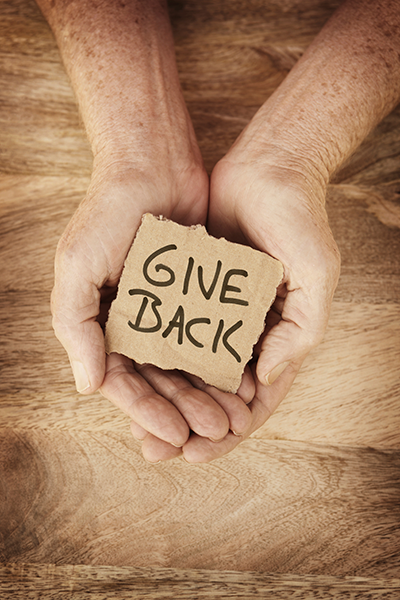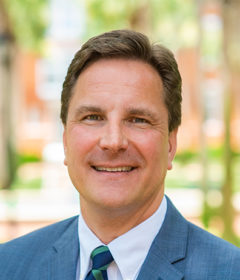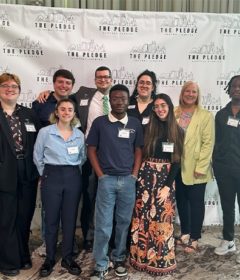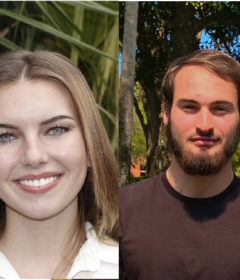Benefits of Generosity Extend Beyond the Gift


by Andy Butcher
If you had a penny for every time someone said that money can’t buy you happiness, you probably would be rich enough to put that piece of accepted wisdom to the test.
“But if you think this, you are just not spending it right,” says Michael Norton, Ph.D., Harold M. Brierley Professor of Business Administration at the Harvard Business School and a member of Harvard’s Behavioral Insights Group.
In a 2011 TED Talk Norton describes a research project where people were given $5 or $20 either to spend on themselves or to use it for others. Oddly enough, those who used the money for someone else felt happier at the end of the day, while the me-spenders felt less happy.
This was not a one-off.
Reviewing data from 136 countries, Norton and his team discovered that in all but one case, people who gave money to charity were happier than those who did not.
“You don’t have to do amazing things with your money to make yourself happy either,” he adds in his message, appropriately titled How to Buy Happiness. “You can do small, trivial things and still get these benefits.”
The payback is not just in warm fuzzies, or what economists have termed “the warm glow.”
A growing body of research has found significant health benefits in giving to others as well. Blood pressure goes down, stress is reduced and production of oxytocin, the “cuddle hormone” released by breast-feeding and lovemaking that helps people bond, is increased.
One study even found that people who helped others with health needs had their own odds of an early death cut by more than half compared to those who did not lend a hand.
When you are thinking of being kind, your parasympathetic nervous system is activated “and you get these very nice effects,” summarizes James Doty, M.D., clinical professor of neurosurgery at Stanford University and director of the Center for Compassion and Altruism Research and Education.
“That’s our default mode as a human being,” he tells Dave Erasmus, founder of social giving platform Givey.com, in a YouTube interview. “It is to be socially connected, it is to care, and that is why when you act in that manner it has such a wonderful effect, because that is how we are supposed to be.”
 However, generosity does not always necessarily have a noble prompt, cautions Minah Jung, Ph.D., assistant professor at the Stern School of Business at New York University and part of the faculty at the Judgment and Decision Making Research Lab at the Haas School of Business, University of California-Berkeley.
However, generosity does not always necessarily have a noble prompt, cautions Minah Jung, Ph.D., assistant professor at the Stern School of Business at New York University and part of the faculty at the Judgment and Decision Making Research Lab at the Haas School of Business, University of California-Berkeley.
In addition, people may give because it makes them look good or because they worry what others might think of them if they don’t give, she said. (A case in point might be the ALS Ice Bucket Challenge that went viral in 2014, doubling Lou Gehrig’s Disease charity donations.)
“It’s complicated,” said Jung of the motives for giving, “because humans are reciprocal ― they feel the pressure to be nice back to someone.”
While it may be unclear whether the drive is Darwinian impulse or divine imprint, Americans sure do a lot of it.
The United States topped the 140 countries listed in the 2014 World Giving Index, along with Myanmar. The U.S. earned its spot for its combined levels of donations, volunteering, and “helping a stranger,” while Myanmar’s surprisingly high ranking was due to its high rate of making cash donations, arising from its strong Buddhist tradition of charity.
Meanwhile, Americans gave away a record $358 billion to charitable and religious organizations last year, up seven per cent over 2013, donating an average three percent of their income.
Though it may be the easiest form to measure, generosity isn’t just about money, of course. People also give of their time, their talents, their connections — even their blood and organs.
When it came to volunteering, one in four Americans served up some of their time to help others in 2014, amassing a total of 62 billion hours. With a median one hour a week calculated at minimum wage, that was a total of almost $23 billion in donated time.
If American generosity is part of a train, it’s been the caboose, pulled along by the engine of individuality, says Paul Croce, Ph.D., Stetson professor of history and director of American studies. For example, some of the giving by the first great U.S. philanthropists in the 19th century was motivated in part by “enlightened self-interest,” he notes.
Croce also referenced William James, the founder of American psychology and pragmatism, about whom he is a recognized authority.
“James was keen on observing that we do a lot of things based on our interests and that is not necessarily a bad thing,” Croce explains. “He called it being in tune with our spiritual selves.”
Indeed, generosity is a central tenet of the oldest religious codes that insist we care for the poor, asserts Kandy Queen-Sutherland, Ph.D., Stetson’s Sam R. Marks Professor of Religion. But even here, she believes there was an element of self-interest.
To prove her point, Queen-Sutherland cites the ancient code of hospitality: “When the sojourner was in your midst, you shared your food, you brought him or her under your protection, and the reason was because you never knew when you might be a sojourner in a foreign land yourself.
“Yet, it would be terribly sad if the only reason you gave was to get something in return,” she adds. In that regard, anonymous giving may be even more meaningful and powerful. “Then it has nothing to do with recognition,” she explains.
Not that feeling good about doing some good is necessarily bad. Stetson Chaplain Michael Fronk ’74 hears more than most about the many behind-the-scenes acts of kindness that happen at the university. He maintains “there is nothing wrong with getting a sense of satisfaction from giving.”
Personally, when he gives, Fronk says, he experiences “a feeling that I am making God smile.”
While concern for others is a prime motivator to give, gratitude is another. That’s why Fronk and his siblings, who benefited from financial assistance while Stetson students, established the Marion & George Fronk Memorial Endowment Music Scholarship in honor of their parents.
A similar sense of appreciation spurs Danielle Lindner, Ph.D., assistant professor of psychology at Stetson, to give to her alma mater.
“Aligning generosity with one’s own values, rather than just giving out of a sense of obligation, can make it more meaningful,” Lindner says. “We like to think of giving as always being this altruistic thing, but it doesn’t necessarily have to be either-or. You can have abstract motives and also still derive some satisfaction or purpose because you are doing something that is consistent with your values. Ultimately, I don’t think that giving for one reason over another is any less valuable or meaningful.”
In more than 30 years as a member of Stetson’s board of trustees, including a term as chair, senior attorney and former Florida Rep. and Speaker of the House J. Hyatt Brown has seen in others and experienced for himself the ways in which giving also has a return. For instance, he gets pleasure spending time with Stetson students who have received financial help.
Additionally, Brown observed that, like the ripples from a stone thrown into a pond, generosity often has a benefit beyond the original or intended recipient.
And the payback continues after Stetson students graduate.
“Education is so important for the continued growth and development of the United States,” Brown says. “Stetson is doing a damn good job in my opinion in helping to mold and graduate a complete person, and we need a lot more complete people.”
With that in mind, it appears that not only can money buy happiness for the giver, it can buy happiness for others, too.
This article also will appear in the next edition of Stetson University Magazine, due out in mid-November.



